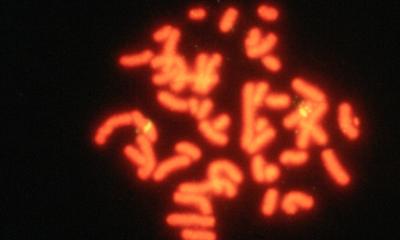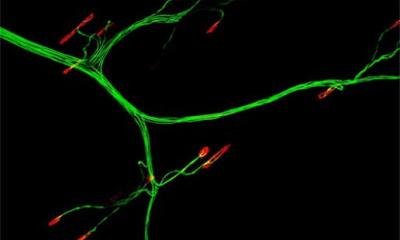Catching Multiple Sclerosis before it strikes
More than 2 million over the world suffer from Multiple sclerosis (MS). It attacks the central nervous system and eventually renders most patients disabled. Although there is currently no cure, a breakthrough finding from a Tel Aviv University scientist and physician may lead to earlier diagnosis, more effective intervention, and perhaps even a cure for the autoimmune disease.

Prof. Anat Achiron of Tel Aviv University's Sackler Faculty of Medicine and vice-dean of research at Sheba Medical Center has uncovered a new way of detecting MS in the blood through her research at Sheba. The findings, just published in the journal Neurobiology of Disease, is expected to pave the way for a diagnosis of MS before symptoms can appear, allowing for earlier treatment.
"We are not yet able to treat people with MS to prevent the onset of the disease but knowledge is power," Prof. Achiron says. "Every time we meet a new patient exhibiting symptoms of MS, we must ask ourselves how long this has been going on. We can diagnose MS by brain MRI, but we've never been able to know how 'fresh' the disease is," she says.
Clues for early intervention
If doctors can predict the onset of MS early enough, intervention therapies using immunomodulatory drugs such as Copaxone or beta-interferon drugs that stave off MS symptoms, might be used. "We theorized that if we looked at the gene expression signature of blood cells in healthy people, we could look for possible biological markers that characterize those who subsequently developed MS," says Prof. Achiron.
Examining blood samples of twenty 19-year-old Israelis who were inducted into the army as healthy soldiers, and the nine of them who later developed MS, Prof. Achiron and her team at Sheba were able to use a "high throughput analysis" using more than 12,000 gene transcripts expressions. The screening compared similarities and differences in the blood of those who developed MS and those who did not, eventually establishing biological markers.
"Those who will develop MS will show a different blood signature from those who will not," says Prof. Achiron. "When we compared the gene expression signatures, we saw a similar pattern of the same working biological processes."
Seeing nine years into the future
These early genetic markers may now be used to test for multiple sclerosis up to nine years before healthy young adults start developing symptoms. And because MS is thought to have a genetic component and a tendency to be found in siblings, Prof. Achiron says the biomarkers can be used as a tool for brothers and sisters of patients.
Why test in advance of a cure? "The idea is that we'll know more about the genetics of MS through this new discovery, with the hope that early intervention therapies may be more effective, and help advance medicine toward a cure," Prof. Achiron says.
By the time a person notices symptoms, significant and irreversible nerve damage is already done. MS is classified as an autoimmune disease that afflicts the brain and spinal cord. Symptoms vary, because the location and severity of each attack can be different, and until now, there has been no way of knowing who it will strike. The disease causes the body's immune system's T cells to mistakenly regard the myelin sheath around our body's neurons as foreign, so the immune system starts attacking the sheath, causing neurons to short circuit. The disease is more prelevent in cold climates and attacks twice as many women as men.
This new insight into who will develop MS in the future is a first on the path of finding a cure to the disease.
Two of the most important drugs that shorten multiple sclerosis attacks were developed in Israel, and Tel Aviv University is considered a center of excellence in MS research. Other researchers in the study include David Magalashvili and Anna Feldman of Tel Aviv University, and Drs. Itamar Grotto and Ran Balicer of the Israel Defence Forces.
Picture: pixelio/ltk
30.04.2010











